Compact stun guns with integrated chargers offer a convenient, reliable, and safe personal defense solution. Their advanced safety features, including sensitive triggers and automatic deactivation, prevent accidental misfires. The robust design ensures durability, while the in-built charger eliminates the need for external accessories, ensuring the device is always ready to use. These stun guns are easily portable and user-friendly, with customizable triggers and educational resources for safe operation, making them an ideal choice for personal safety.
Stun guns, designed to incapacitate assailants with a powerful electric shock, must possess robust safety mechanisms to prevent accidental discharges. This article explores key misfire prevention features, focusing on compact stun guns with integrated chargers. We delve into the role of safety triggers, sensors, testing protocols, and user education in ensuring these devices operate reliably and safely. Understanding these mechanisms is vital for users to maximize the effectiveness and security of their compact stun gun with built-in charger.
- Understanding Stun Gun Safety Mechanisms
- The Role of a Built-in Charger in Misfire Prevention
- Compact Design: Enhancing Usability and Safety
- Advanced Triggers and Sensors for Accidental Discharge Protection
- Testing and Quality Assurance for Reliable Performance
- User Education: Key to Effective Misfire Prevention
Understanding Stun Gun Safety Mechanisms
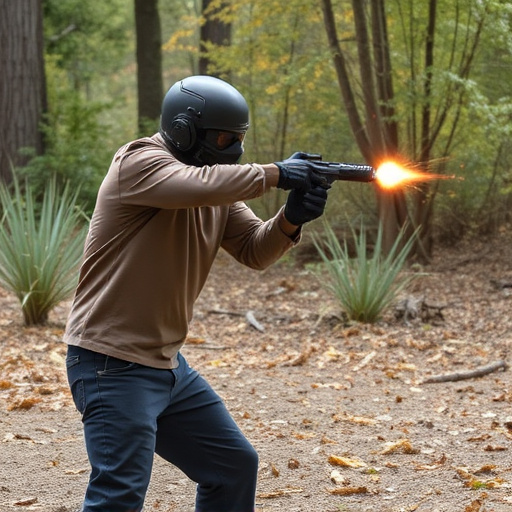
Stun guns, particularly the compact ones with built-in chargers, are designed to provide personal safety in a convenient and discreet manner. Understanding their safety mechanisms is paramount for users to ensure effective protection. Many modern stun guns incorporate several features to prevent accidental misfires. These include sensitive trigger mechanisms that require a firm press, ensuring only deliberate activation. Additionally, some models have safety switches or lockouts that automatically deactivate the device when not in use, preventing unintended discharges.
The design of these compact stun guns often includes protective enclosures and impact-resistant casings, safeguarding internal components from damage and reducing the risk of accidental activation. Built-in chargers further enhance safety by eliminating the need for external charging cables, thereby minimizing potential hazards associated with electrical connections. These features collectively contribute to a safer user experience, especially for individuals who rely on stun guns as personal defense tools in various situations, from outdoor adventures to urban walks.
The Role of a Built-in Charger in Misfire Prevention
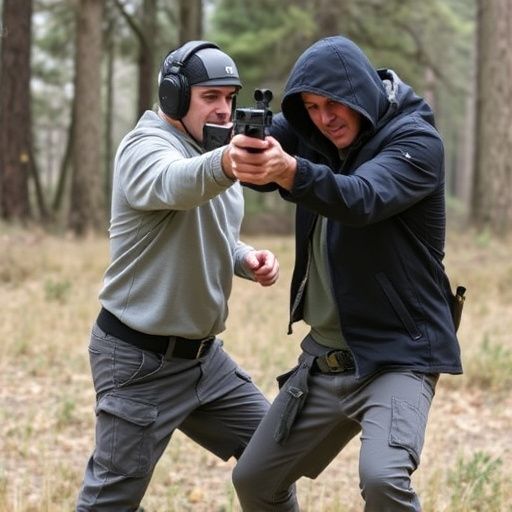
A compact stun gun with a built-in charger plays a pivotal role in misfire prevention, offering multiple benefits that enhance its reliability and safety features. By integrating a charging mechanism directly into the device, users can ensure their stun guns remain fully charged at all times, eliminating the risk of power failure during critical situations. This is particularly important for self-defense scenarios where every second counts, ensuring the stun gun functions optimally when needed most.
Moreover, built-in chargers contribute to the overall compactness and convenience of the stun gun. They eliminate the need for separate charging cables or adapters, making it easier for users to carry their device without worrying about additional bulk or accessories. This design choice not only streamlines the user experience but also adds a layer of protection against accidental misfires that could result from damaged or missing external charging components.
Compact Design: Enhancing Usability and Safety
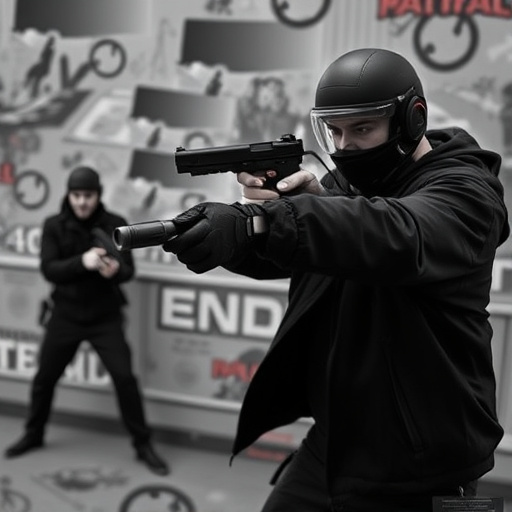
A compact design is a significant feature in modern stun guns, especially for those models that include a built-in charger. This small and sleek form factor offers multiple advantages, enhancing both usability and safety for users. The reduced size allows for easier carrying and storage, ensuring that your stun gun is always within reach when you need it most. It can fit comfortably in pockets or hidden compartments, making it an ideal self-defense tool for everyday carry.
Moreover, the compact nature of these stun guns often includes thoughtful design elements like ergonomic grips and simple activation mechanisms. These features contribute to safer use by reducing the risk of accidental discharge, as users have better control over the device’s activation. The built-in charger further streamlines the process, eliminating the need for separate charging accessories, making maintenance simpler and more convenient for the user.
Advanced Triggers and Sensors for Accidental Discharge Protection
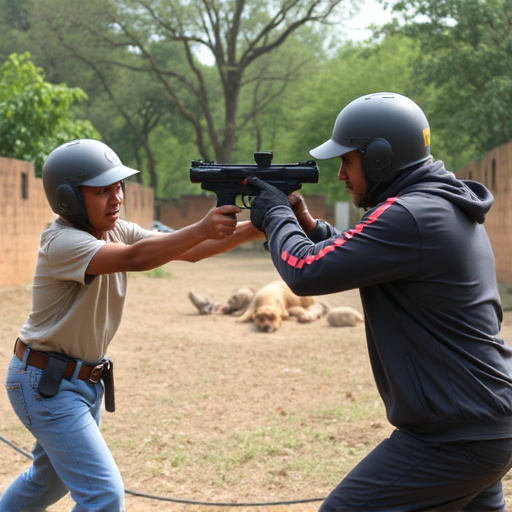
Advanced triggers and sensors play a pivotal role in preventing accidental discharges from compact stun guns with integrated chargers. These innovative features are designed to ensure user safety and control, making them ideal for personal protection. Modern stun guns employ sophisticated sensor technology that detects body movements and proximity, ensuring the device is intended for use only when needed.
The triggers on these advanced stun guns are highly responsive and can be customized for different user preferences. They often incorporate motion sensors that require a specific action or gesture to activate, reducing the risk of accidental activation in pockets or bags. Additionally, some models feature smart chips that recognize patterns, ensuring the stun gun only fires when it detects a genuine threat, further safeguarding users from unintended consequences.
Testing and Quality Assurance for Reliable Performance
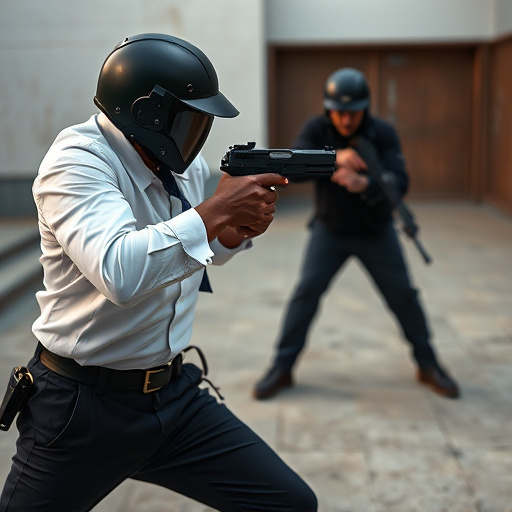
In ensuring the safety and reliability of a compact stun gun with built-in charger, rigorous testing and quality assurance protocols are paramount. These procedures are designed to verify the device’s performance under various conditions, from mechanical durability tests that mimic frequent use and potential impacts to electrical functionality checks that assess the charge delivery system. By subjecting these compact stun guns to simulated misfire scenarios and other extreme situations, manufacturers can identify potential flaws or weaknesses early in the production process.
Quality assurance teams employ advanced diagnostic tools to monitor the electronic components, ensuring precise current and voltage outputs during activation. This meticulous approach guarantees that each stun gun meets stringent safety standards, providing users with a dependable tool when facing threatening situations. The combination of robust testing and meticulous quality control results in a reliable device that can be counted on in critical moments, making it an ideal choice for personal safety enthusiasts who value peace of mind.
User Education: Key to Effective Misfire Prevention
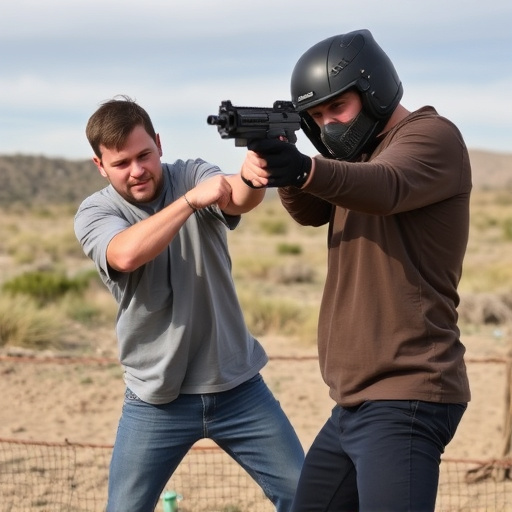
User education plays a pivotal role in preventing misfires from compact stun guns with built-in chargers. It’s essential that users fully comprehend the device’s functionality, safety mechanisms, and proper usage techniques. Comprehensive training should cover topics like understanding trigger activation, recognizing the difference between a discharge and a misfire, and learning safe storage practices to avoid accidental activations. With proper education, users can confidently deploy their stun guns when needed while minimizing the risk of unintended consequences.
Regular practice sessions reinforce user knowledge and help build muscle memory for safe operation. Many compact stun guns come with practice targets or simulants, allowing users to familiarize themselves with the device’s range, power, and activation sequence without causing harm. Additionally, staying informed about product updates and safety guidelines from manufacturers ensures that users employ their stun guns effectively and safely in various situations.
The modern compact stun gun with a built-in charger offers enhanced safety features, including advanced triggers and sensors, making it an effective tool for personal protection. Understanding these safety mechanisms, such as misfire prevention, is crucial for users to ensure reliable performance. Regular testing and quality assurance further guarantee the device’s effectiveness in critical situations. Educating users on proper handling and usage is the key to maximizing the benefits of these safety features, providing them with a sense of security and control.
